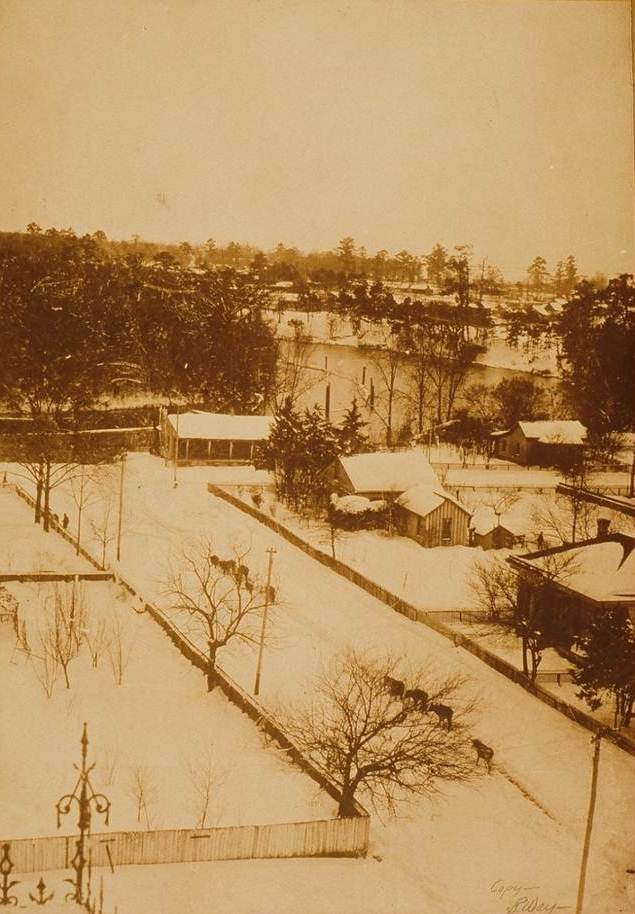.JPG)
By Judith Linsley
In the earliest days of Texas settlement, promoters touted the mild Southeast Texas winters. Compared to New England, Chicago, or even other parts of Texas, they are; but this area has also had some severe winter weather through the years.
February 13, 1895, brought an epic winter storm to this area. The snowfall was so deep-reports ranged from 28 inches to 3 feet-that the Jefferson County Commissioners' Court recorded it in their minutes book.
In 1924, a bitter snow, ice, and wind storm on December 20, described by the Port Arthur News as "the worst blizzard that has hit in years," crippled communication, transportation, and power throughout Southeast Texas. The wind blew electrical wires together, overloading circuits and causing power outages in large areas in Port Arthur and Beaumont.
The Interurban, the electric streetcar line that ran between Beaumont and Port Arthur and known to many as the "Antiurban," sent a special car to cut the ice from the power trolley wire. The car took nearly 24 hours to run the 20 miles between Beaumont and Port Arthur. The Eastern Texas Electric Company rerouted buses from other towns to carry some of the passengers.
The ice downed telephone lines, severing communication between Beaumont-Port Arthur and Houston. Western Union telegraph lines were disrupted; operators accepted only messages that could be "indefinitely deferred," because they had no idea when they would actually be delivered.
Worst of all was the loss of hundreds of head of cattle. The previous summer had been a dry one, when marsh fires destroyed much of the range grass, and the undernourished cattle were "in poor condition to stand the freezing blasts."
The 1924 storm paled in comparison to one on January 21, 1935. A blizzard described as "the most severe in the gulf coast area since 1896" pummeled the Beaumont area with sleet, snow, and wind. An estimated 25,000 head of cattle died from exposure in Jefferson, Chambers, Galveston, and Liberty counties. Total losses came to over $250,000. Some herds were reduced by more than 20 percent. Again, the high death rate was partly blamed on poor grazing conditions the previous summer. Not surprisingly, the Texas longhorns in the herds fared the best.
Thousands of dead cattle lay on the beach and in the water between Sabine Pass and Galveston. Cattle always walk with a north wind, so the herds moved south until they walked into the water and drowned, or walked back out of the water and froze. There were few trees in the marsh pastures to shelter them.
A very small number of hides were salvaged from the dead carcasses, but "fallen green hides" of cattle bring very little money. Most of the carcasses were burned, to prevent disease and an unbearable odor from setting in when warm weather returned.
The great storm of 1935 isn't widely recalled today. But those who actually saw miles and miles of dead cattle on Southeast Texas beaches carried the memory with them all their lives.

A line of cows walks down Pearl Street in Beaumont during a 3-foot snowstorm that fell Feb. 13, 1895. The Neches River is in the background. This photograph was probably made from the cupola of the 1892 Jefferson County Courthouse.